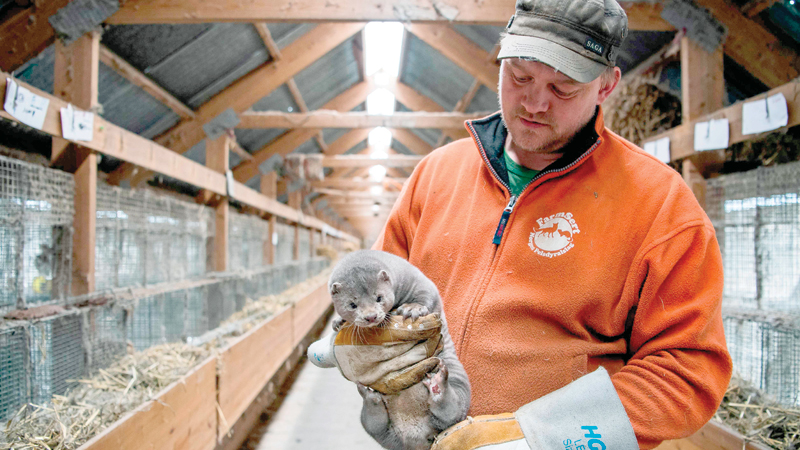

Pierre-Henry DESHAYES -
Baby minks, their skin still smooth and furless, snuggle up against one another under a pile of hay, letting out the occasional squeal: this sight will soon be a thing of the past at Norway’s fur farms.
The Norwegian parliament is due this month to adopt new legislation immediately banning any new fur farms and requiring existing ones to be dismantled by February 1, 2025.
Hailed by animal rights’ activists, the ban has been slammed by Norway’s 200 or so fur farmers: it is often a side business for them but a very lucrative one.
“It represents about 70 per cent of my income,” says Kristian Aasen, as he inspects his 6,000 minks on the highlands of Brumunddal in southeastern Norway.
“I can’t make a living off my farm without the fur,” laments the 39-year-old, whose main business is his 20 heads of cattle.
He is surrounded by dozens of metal cages housing female minks, agitated and worried about their offspring born in late April and early May.
For now, the newborns look like large worms that squeal.
But by early November, they will have developed their glossy winter coats, either brown, black or grey, for which they are so keenly desired... and for which they will be gassed and skinned.
With the new ban, Norway, which accounts for one per cent of world production of mink and fox furs, joins a growing list of countries that already includes Britain and the Netherlands.
“It’s a big victory for animal welfare in Norway. It’s a realisation that the consideration for animals can actually weigh heavier than just money and business interests,” says Siri Martinsen, head of the organisation Noah that has been lobbying for a ban for almost three decades.
“It’s totally unnatural and against these animals’ needs to keep them in very tiny metal cages.”
But the Norwegian fur farmers’ association says the ban is “unjustified, illegal and undemocratic.”
“It’s a profitable and unsubsidised sector that has kept remote areas financially afloat for a century,” says its spokeswoman Guri Wormdahl.
The government has no plans to reverse its decision, however.
“Fur farming in Norway is over,” insists Morten Orsal Johansen, an MP who is overseeing the new legislation through parliament even though he is personally opposed to a ban.
In his cluttered office in the parliament building, the populist right-wing politician said he had agreed to take on the role of rapporteur in order to ensure the ban would be implemented as painlessly as possible.
The new legislation came about as a compromise between the right-wing government and the Liberal party, which made it one of its conditions for joining the coalition in early 2018.
For fur farmers, it is a bitter pill to swallow, given that just a year earlier, parliament gave its go-ahead for a “sustainable” development of the sector. “These are scandalous political manoeuvres,” blasts Aasen.
“It’s unbelievable that a microscopic party that is today polling around two per cent could impose its views on spineless politicians.”
“We’re going to continue importing furs, we can continue to sell them, but we can no longer make them ourselves?” he fumes. — AFP
Oman Observer is now on the WhatsApp channel. Click here



